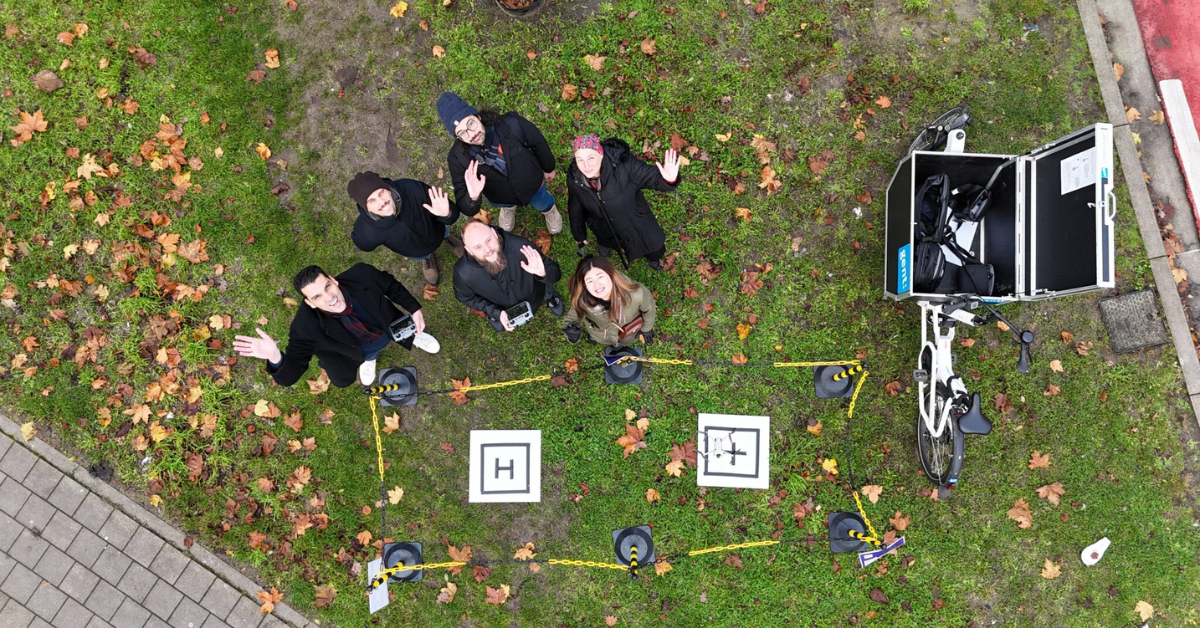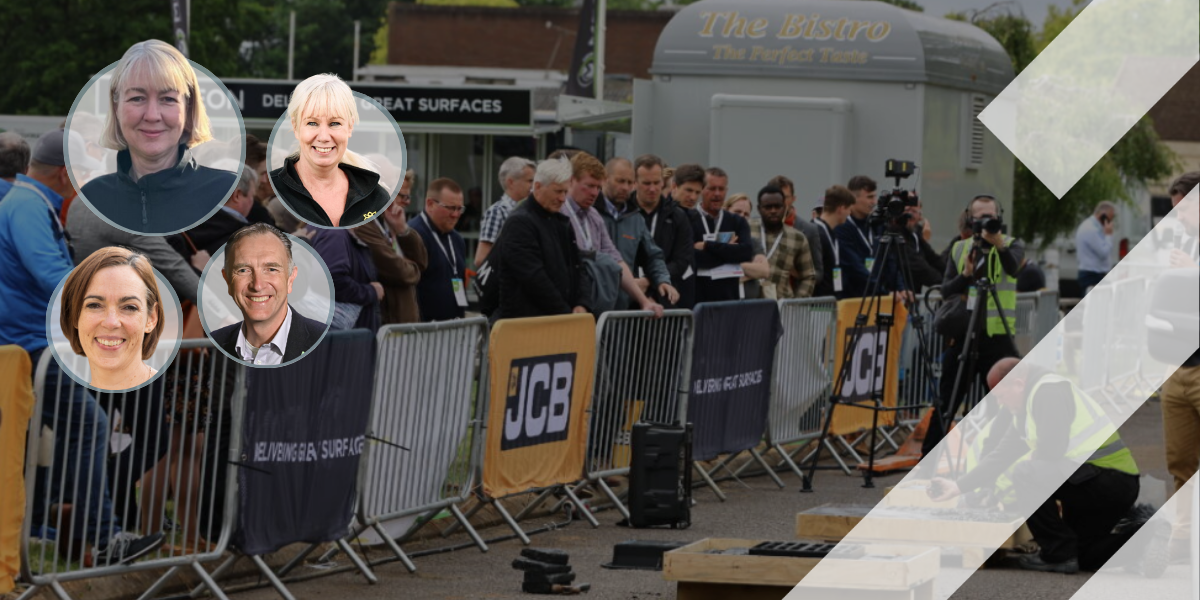Rethinking traffic management after COVID-19
Drops in traffic levels since COVID-19
If there’s one eventuality that traffic managers rarely prepare for it’s a global pandemic that confines more than half the planet’s population to their homes.
Local and national authorities plan for the unplanned and expect the unexpected, but those spontaneous events are typically earthquakes, mudslides, hurricanes, protests or the thankfully occasional multiple-vehicle highway pile-up.
However, over the last 11 months our cities have had to deal with unprecedented drops in traffic levels (Glasgow, for example, reported that during the months of April and May 2020 its roads were operating at 25% capacity, with only two of its city centre car parks more than 30% full for the best part of 10 weeks), so what lessons have they learned from this possibly once-in-a-lifetime dip that also “coincided” with a marked spike in average traffic speeds, and not necessarily in a good way.
Kristina Nilsson, Vice President of Communications at Swedish mobility technologists Voi, points out that cities all over the world are now viewing traffic (and in the broadest sense, mobility) somewhat differently.
“In Milan, city officials are transforming 35km of streets into cycle lanes and widening pavements to protect residents once COVID-19 restrictions are lifted. Central Brussels became a 20kph zone. German, Colombian and Mexican authorities have reclaimed more than 150km of roads across their capitals, with minimal bureaucracy using existing resources such as cones, temporary lights and lane separators. And US cities, like Philadelphia, Denver and Oakland have closed roads completely to cars. In New York, the city council is reportedly planning a reconfiguration of roads for walking and cycling, turning 75 miles of roads into “streets for people.” Nilsson has a word of warning, however.
“The danger is that these ‘corona lanes’ will be just temporary modifications, when a permanent shift is what is needed.”
Mobility: refine, Redefine, Rethink, Reshape
So, has Covid-19 meant that authorities across Europe have had to redefine what traffic management actually means? Have they been able to utilise traffic data for other purposes? And, just as importantly, how have some of the major players in the commercial space been able to help them achieve their newly reshaped goals?

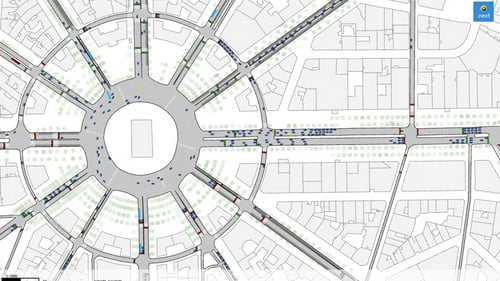
(Photo: © PCA-STREAM)
Nadia Feddo, Marketing Manager at traffic planning, simulation and prediction innovators Aimsun, cites a Coronavirus-inspired project in Paris as an example of how her Barcelona-based firm has played a major role in a city’s fresh approach to managing traffic.
“In response to the Coronavirus, Paris introduced over 45km of new cycleways, known as “coronapistes” and restricted motor traffic in areas such as the roads alongside the River Seine as part of the ‘Paris Respire’ (Paris Breathes) plan to clean the city’s air and improve quality of life.
“In order to reallocate the road space without negative side effects for other road users, city planners used Aimsun Next mobility modelling to test out road schemes virtually. These models simulate how multi modal traffic, including cyclists and pedestrians, will use the new layouts, before they ever make it to the physical world. Redevelopment of the Place de la Nation has increased pedestrianised space by 50 % and restricted traffic around the perimeter following planning with Aimsun Next modelling software, which helped planners to predict the impact of different positioning of the pedestrian crossings on traffic flow; the result was a widely welcomed improvement in the area.”
The latest high-profile change to Paris’s streets will be the revamping of the iconic Champs-Elysées, turning the 2km road into an ‘extraordinary garden’, carefully modelled to improve air quality and make the space more people-centred.
“Working for architect studio PCA-STREAM, Aimsun’s modellers built a baseline scenario to calibrate vehicle behaviour throughout the study area using the available count and travel time data sets,” she continues. “This careful calibration work reproduced the real-life levels of traffic, particularly at very busy, complex intersections such as Place de l’Étoile or Place de la Concorde, incorporating the assumptions for changes in travel demand based on analysis of traffic trends by the City of Paris. This ensured a holistic approach to changes in network layout, significantly reducing the risk of the Champs-Elysées scheme causing unintended traffic congestion in the wider area.”
“This careful calibration work reproduced the real-life levels of traffic, particularly at very busy, complex intersections such as Place de l’Étoile or Place de la Concorde, incorporating the assumptions for changes in travel demand."
Glasgow’s capital gains
A holistic approach to traffic management that leads to safer streets and more space for its citizens is a plan that is echoed in Glasgow, as the city’s Head of Transport Strategy Marshall Poulton elucidates.


“Glasgow, like many other cities, saw a dramatic drop in traffic levels towards the end of March last year as a result of the first lockdown. Car traffic was down by about 70% and that lasted for a few months. The Scottish Government acted very quickly to support cities in Scotland and came up with what was called the Spaces for People project. It was basically a rapid response to the pandemic to provide temporary infrastructure to help public bodies and bring changes to streets to support physical distancing. The Scottish Government allocated about £30 million (Euro 35 million) to the fund and we got something in the region of £7.5 million. The main objective of this Spaces for People strategy was threefold. One was to inhibit the resurgence of Covid-19 post lockdown, another objective was to encourage economic recovery by supporting safe operation of all the businesses and the third was to ensure safe and physically distanced options for travel by public transport. But as I'm sure many other cities will testify to, it was a really strange time and we had to react very quickly to get a lot of these measures in place.”
As many cities are discovering some of the temporary measures brought in during the course of the last year have proven to be so successful that their leaders have a decision to make as to whether to make them permanent.
Says Poulton: “As part of Spaces for People we closed one or two streets in the city centre to traffic and that’s proved to be very successful. George Square, where the city chambers building is located, has had two sides closed off for some months now and although it's hard to tell just how successful it's been from a traffic management point of view, it's been well received and was actually already part of a longer-term plan to do this. The pandemic has given us the opportunity to try it out and I think the way it's going and it could be permanent.”
“Although it’s hard to tell just how successful the closure of two sides of George Square to traffic has been from a traffic management point of view, it's been well received and was actually already part of a longer-term plan to do this."
Sustainable traffic: New habits
For Michael Ganser, Vice President of Solution Consulting at Kapsch TrafficCom, there are two shining examples of how cities and their inhabitants are adapting to what is steadily becoming normal (on account of it no longer qualifying as the ‘new normal’ after a full year of lockdowns and restrictions).
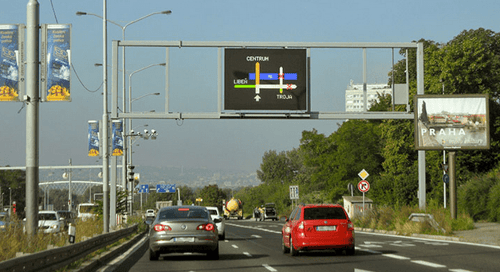
“Some 62 % of Austrian citizens are willing to limit car journeys to certain times in order to improve urban air quality. 86 % are in favour of reducing traffic-related emissions by means of environment-friendly transport solutions. Although a broad theoretical consensus already existed among the population, practice during the Coronavirus crisis is proving to be at odds with expectations: passenger numbers on local public transport have fallen dramatically and switching to electric cars remains the exception. On the other hand, we are seeing a sharp increase in switching to bicycles and e-bikes.”
“Although a broad theoretical consensus already existed among the population, practice during the Coronavirus crisis is proving to be at odds with expectations."
Mobility experts have advised cities to fully exploit this window of opportunity to achieve the climate goals of the Paris Agreement by means of specific action.
“The public authorities of many large cities throughout Europe have reacted swiftly during the pandemic and created more space for cyclists and pedestrians,” says Ganser. “In order to maintain social distancing, cycle lanes have been widened and even new cycle routes have been set up in what has been a real success story. Those responsible should therefore grasp the opportunity existing now to get things back on the right track. Digitally integrated systems have proven in practice to be very effective here. Mobility can be managed effectively throughout the year despite rising car traffic volumes and without letting CO2 emissions return to pre-crisis levels.”
Madrid has already demonstrated how this is possible. In order to fundamentally reduce traffic jams and airborne pollutants, the Spanish capital has implemented an intelligent mobility system.
“An important component of this solution is a system of adaptive traffic light management which automatically adjusts to reflect the current traffic situation,” Ganser explains. “This alone has enabled jams to be reduced by approximately 20 % and emissions by around 10 %. The key to even more free-flowing and therefore economically efficient traffic management lies in the use of anonymized vehicle data which are integrated into the traffic management network.”
Kapsch has added over 200 permanent traffic measurement units to the existing network capturing traffic data on Madrid’s roads. The Madrid authorities obtain an accurate overview of the current traffic situation based on comprehensive mobility data captured about pedestrians, cyclists, motorbike riders and car drivers.
“These measurements are supplemented with data from other sources, such as local public transport providers and the police, before being integrated into and analysed by our EcoTrafiX™ software platform,” Ganser adds. “This not only allows the municipal authorities to respond immediately to accidents and traffic jams; the data also enables the city to manage traffic flows and to continuously optimise urban mobility covering all modes of transport. Both the people and the environment benefit as a result.”
Adapting to new mobility situations
Dynniq’s Joost de Ruiter, Managing Director of Peek Traffic, has seen the pandemic as a period for reflection and a chance to re-evaluate the company’s range of traffic management products.
“It's certainly been, from a traffic management perspective, a very interesting situation. After the first few months of lockdown people started to want to know what the impact on traffic was going to be, now that we had little or no idea how long it would last. So we had to adapt to a new situation. We saw a dramatic drop in traffic but the drop in public transport usage was even bigger. Strangely enough, the sales of second-hand cars, in the Netherlands and other countries, actually increased. We saw a drop in traffic management and traffic road users, but at the same time we saw a whole new dynamic popping up.”
“We saw a drop in traffic management and traffic road users, but at the same time we saw an increase in sales of second-hand cars."
Also, the times that people were on the roads were changing and the fluctuation throughout the week was completely different.
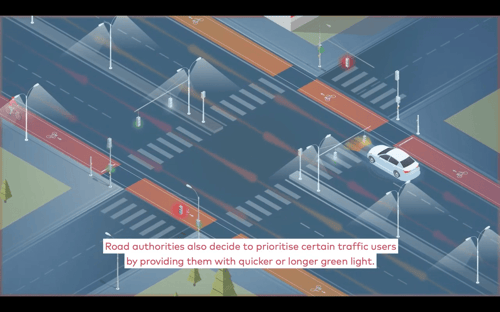
“This led to an unprecedented situation for cities’ and road authorities’ traffic management applications,” de Ruiter recounts. “Where generally you make one simulation, for example, and work out the best solution and scenario to manage the traffic so you can, from a central perspective, steer the different scenario that you put in place based on, for example, Moscow, but all those systems and scenarios suddenly didn't apply anymore. After the summer the questions started to come: please can you help us, provide us with all kinds of data, KPIs, etc, all the differences of road usage. So that's what we helped them with. We have a team of traffic engineers that are highly educated in traffic management and they did all kinds of simulations and data crunching to see what the differences are and how we should adapt.”
With lockdowns and restrictions coming and going at worryingly regular intervals, de Ruiter and his team were having to think on their feet.
“It's really difficult to create one new traffic management application or scenario and implement it because after a month or two it's not going to work anymore. What we’re seeing, in real terms, is Traffic Management as a Service (TMaaS). We know and understand that traffic fluctuates and we understand that once the lockdowns are lifted people will go back out onto the road and still won’t be using public transport.”
From a post-Covid perspective, TMaaS is going to help them to get a better understanding, on a monthly or quarterly basis, of the traffic management requirements and road usage. That will require us to re-analyse the whole situation on a regular basis, and then have the traffic management application adapt to the new situation. By this summer we will have a fully automated flow as a service engine of our traffic management application. I wouldn't go as far as saying that it's AI already but it's certainly going to help to produce better automated reports, based on the data that's coming out of the traffic signals, and so on.”
Managing public transport passengers
Finally, although this article has focused largely on the pandemic’s effects on passenger vehicle management and on how the changing needs of citizens have played a significant part in this new thinking, the needs of cities’ and regions’ public transport operators were also drastically altered and remain at previously unseen low levels.
Cristina Pou Fonollà, Head of Public Road Transport at the Government of Catalonia’s General Direction of Transport and Mobility, told Intertraffic about innovative new schemes that although brought in during the pandemic, were already “in the works”, in similar style to one of Glasgow’s road closure schemes.
Currently, the transport-on-demand network of the Government of Catalonia is made up of 233 lines, which benefit 733 areas of low population density distributed around the territory, with the collaboration of the local entities. The pandemic and its far-reaching effects on travel behaviour and patterns has only brought the public transport needs of the Catalonian people into sharper focus.
“The Department of Territory and Sustainability, as well as the Metropolitan Authority of Barcelona, have developed a system for purchasing single tickets through a mobile app. This will speed up access to public transport and facilitate the maintenance of the safety distance, thus eliminating the use of cash and speeding up the ride in the vehicle and the task of the driver,” she says.
The pilot test has begun on the ‘exprés.cat’ bus lines in the Barcelona area operated by Sagalés and Moventis but is expected to be extended to the other lines.
“Users must download or update operator apps (for Android and iOS) from app stores on both platforms (Google Play or App Store). The new version will include a section called ‘Purchase of single tickets’ that will allow the acquisition and validation of tickets from a smartphone. The application guides the user to purchase the single ticket by selecting the express bus line, its address, and the stops of origin and destination, as well as the number of units you want to buy. Once you have paid by credit card, the purchased tickets will be saved in the corresponding section of the application.”
Working separately together
While Covid-19’s effects are still being keenly felt all across Europe, those responsible for managing the traffic in our towns, cities and regions are going to have to “think on their feet” for a while longer yet.
However, cities, regions, suppliers, OEMs, consultants and travellers alike are learning to exist in this unusual new world where mobility is at a premium – working separately but at the same time together. The traffic and transport needs of European citizens are being addressed in ways that until the spring of 2020 were virtually unimaginable.
Share your story
Do you have an innovation, research results or an other interesting topic you would like to share with the professionals in the infrastructure, traffic management, safety, smart mobility and parking industry? The Intertraffic website and social media channels are a great platform to showcase your stories!
Please contact our Sr Brand Marketing Manager Carola Jansen-Young.
Are you an Intertraffic exhibitor?
Make sure you add your latest press releases to your Company Profile in the Exhibitor Portal for free exposure.
Get up to speed on the mobility industry - our newsletter straight to your inbox!

